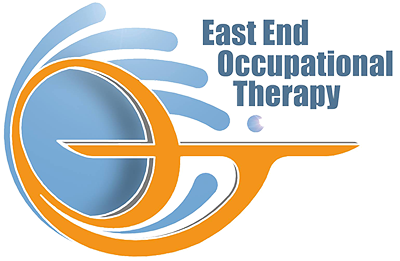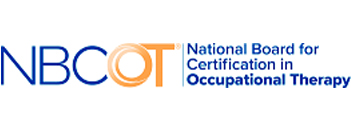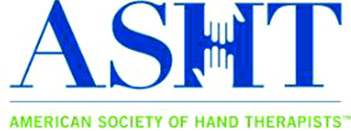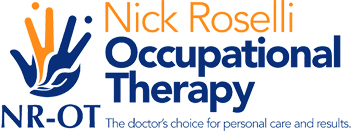Tennis Elbow Occupational Therapy
Welcome to East End Tennis Elbow Occupational Therapy
East End Occupational Therapy is a specialized hand and upper extremity rehabilitation practice that has been dedicated to providing a complete and comprehensive range of occupational therapy services to its patients. The team at East End tennis elbow occupational therapy strives to deliver the best evidence-based care possible through our client-centered approach. Not only is our practice in direct contact with your physician from the initial examination through your discharge, but we also work closely with your surgeon to develop an optimal plan of care with the goal of restoring your functional independence. Most of us rely on our hands routinely and it is not until we suffer an injury that we recognize the importance of our hand function when performing daily living skills.
Protect Yourself From Tennis Elbow This Summer

Tennis elbow can be a debilitating injury that lasts weeks. Tennis elbow, or lateral epicondylitis, is an overuse injury that affects the tendons connected to the outer portion of the elbow. This can happen to anyone who uses their wrist and forearm repetitively, not just tennis players. Repetitive movements or contractions of the forearm muscles connected to the elbow can cause stress on the tissue and lead to microscopic tears on the tendon. While anyone can become afflicted with tennis elbow, it is most common amongst 30 to 50-year-olds who have a certain occupation or play certain sports that require wrist and forearm movements. So how do you protect yourself from tennis elbow and avoid weeks of pain and recovery? Here are some tennis elbow prevention tips from expert occupational therapists at East End Occupational Therapy, who offer tennis elbow occupational therapy.
How To Prevent Tennis Elbow:
Please make no mistake, it can be not easy to prevent tennis elbow. Since tennis elbow is an overuse injury, it usually occurs from the run-of-the-mill activities people need to complete in their everyday lives. Stopping these activities may not be plausible advice for some, especially when the activity causing the injury also provides for their livelihood. If it is at all possible, the first tip is to:
Stop The Activity
If this activity is causing pain, rest, and attempt to find a way to perform the function differently mechanically. If possible, do the action without requiring too much influence from the wrist and forearm. For example, if you use manual tools and actions like using a hammer or screwdriver cause you pain, consider a switch to automatic tools. Also, try to create a greater mind-muscle connection with your upper arm muscles. Greater focus on using your bicep, tricep, or shoulder muscles in your activities can enormously reduce the stress placed on your elbow tendons.
Warm Up Your Muscles
Proper warming up of a muscle group before activation is recommended for any activity because it has been shown to increase blood flow in the targeted area and prepare the muscle for a more involved workload. Warming up also positively affects flexibility, range of motion, and performance, lowering the risk of injury.
Strengthen Your Forearm Muscles.
One of our muscle’s functions is to act as shock absorbers for forces placed upon our bodies. The more muscle present, the less stress placed on underlying tissues like our bones and tendons. In the case of tennis elbow, sufficient forearm muscles protect our tendons from tears and are better able to:
Handle outside stressors on the wrist, arm, and elbow. Handle the stress of daily repetitive movements with proper form and function. A person with solid forearm muscles has the ability to do more work without sustaining overuse injuries than someone with weaker forearm muscles
Wear A Specialized Tennis Elbow Splint
It’s best to wear this splint while performing the repetitive activity causing you pain. There are splints on the market designed to keep your arm in a specific position so that when you perform certain wrist and arm movements, you do not sustain any more damage to your tendons than what is already present. For splint/brace recommendations, visit East End Occupational Therapy, tennis elbow occupational therapy for professional advice.
Contact East End Tennis Elbow Occupational therapy!
Don’t let tennis elbow slow you down this summer! Find a proven prevention technique or recovery solution to your elbow pain. Contact our experts at East End Occupational Therapy, on long island, for your overall elbow pain concerns today! Contact us to learn more about how we can help you out!
Fill Out This Form For Tennis Elbow Occupational Therapy
Occupational Therapy For Tennis Elbow
Lateral epicondylitis, also known as tennis elbow, is inflammation in the muscles of the forearm attaching to the elbow. This inflammation is usually caused by small tears in tendons attaching to the elbow joint and arm bone, or the extensor carpi radialis brevis tendon. Tennis elbow is an overuse injury caused by repetitive activity and workplace injuries in fields like racquet sports, painters, carpenters and plumbers. If you are suffering from tennis elbow and are looking fortennis elbow occupational therapy, reach out to us at East End Occupational Therapy.
Causes and symptoms of tennis elbow
Tennis elbow is an overuse injury, caused by repetitive use of the tendon in question. The inflammation is not a one-time event that causes tennis elbow but is believed to be a result of repetitive use and inflammation, caused by incompletely healed micro-tears in the tendon. Activities that cause repetitive gripping, grasping, and elbow movement are the main causes of this injury but can be caused, rarely, by trauma like a direct hit to the elbow.
Common symptoms of tennis elbow include aching pain or a burning sensation over the outside of the elbow. This pain is worsened when gripping or lifting using your arm, or repetitive movements involving elbow movement. The pain will start at the elbow but can spread into the forearm as well, especially if left untreated. The pain can grow gradually, or become onset suddenly, and can vary from mild to severe and dibilitating depending on the severity of the condition and lack of treatment. Tennis elbow also develops weakness in grip strength and strength in the arm overall. If you are suffering from tennis elbow, seek professional help right away to prevent your condition from worsening. For tennis elbow occupational therapy, contact us at East End OT and see how we can help you!
Treatment for Tennis Elbow
Treatment for Tennis elbow typically includes over the counter pain medications and physical/occupational therapy. Your therapy sessions for tennis elbow will include RICE therapy and gentle exercises to strengthen muscles in the forearm and heal tendons to prevent reinjury, recover from pain, and reduce inflammation. Some typical exercises for tennis elbow include:
- Fist Clench- improves grip strength and strengthens forearms.
- Dumbbell Supination- strengthens the supinator muscle in your forearm, which is responsible for turning the palm upward
- Wrist Extensions and Flexions- wrist extensors are small muscles that connect to the elbow and help bend the wrist. These muscles are also subject to overuse and require strengthening and healing.
Your occupational therapist will work with you, using exercise techniques like the one described above and other therapies to help heal your tennis elbow and train your body to prevent reinjury. Come into East End OT or make an appointment and receive tennis elbow occupational therapy to help with your tennis elbow today!
Occupational Elbow Injuries
Injuries in the workplace are prevalent based on the repetitive nature of the job. The majority of occupational injuries occur from the specific motions that are involved while on the job site. Anyone can injury their elbow from activities such as grasping and lifting particular objects. However, these injuries can be avoided with awareness and caution. East End tennis elbow occupational therapy is here to help with elbow injuries that may be concerning you. Please find out how we can help out with your occupational injury!

Elbow Injuries are one of the most common injuries that can occur in the workplace. They can happen at any given moment in time. Also, they can appear from a possible awkward position you may be in a while performing a specific task. However, some of the most popular elbow injury that tennis elbow occupational therapy can help you with are:
- Bursitis: This is caused by repetitive motions that put a lot of stress and pain on the elbow itself. Some of the pain that occurs is a sharp shooting pain towards the joint.
- Tennis or Golf Elbow: This is when the tendon’s forearm connects to the inner part of your elbow. Clenching your fingers tight can cause your elbow to feel sore and make you feel weak as well.
- HyperExtension: The elbow joint is extended beyond its normal range of motion. Since it has an awkward movement, the elbow can become dislocated. This injury may cause stiffness, swelling, and even a loss of circulation in the area.
How to Prevent Occupational Elbow Injuries
- Strengthen your forearm muscles by squeezing a tennis ball or starting with a light training weight program.
- Stretch your arms and wrists before starting any workout or repetitive actions.
- If you’re lifting something heavy, use your legs and not your back. Your legs are one of the strongest muscles in your body.
- Your body needs time to rest, and it’s essential to let the muscles recover.
Injuries in the workplace are prevalent based on the repetitive nature of the job. They can happen at any given moment in time. These injuries can be avoided with awareness and caution. East End tennis elbow occupational therapy is here to help with elbow injuries that may be concerning you. Please find out how we can help out with your occupational injury!
What Are Common Occupational Elbow Injuries?
Elbow pain is very common and can be extremely painful. There are numerous reasons as to why someone can be experiencing elbow pain. Unfortunately, something as simple as having severe elbow pain; interferes with one’s daily life routines. If you feel you are someone whose life is being taken over by elbow pain, you should seek help. East End Occupational Therapy is a great office that offers tennis elbow occupational therapy.
What is Causing the Elbow Pain?

Several occupational elbow injuries cause tremendous pain on one’s elbow. Some of these painful injuries/conditions that East End Occupational Therapy focuses on are:
- Golfer’s Elbow (medial epicondylitis)
- Tennis Elbow (lateral epicondylitis)
- Cubital Tunnel Syndrome
- Elbow Fractures
All About the Elbow Injuries
Golfer’s Elbow: First off, what is a golfer’s elbow? This injury does not just occur in golfers; anybody can get this. Some of the causes of golfer’s elbow are as followed:
- Weight training
- Racket sports
- Throwing sports
- Repetitive occupational movements: construction, painting, plumbing
The pain resulting from this condition occurs due to damage to the muscles that control your fingers and wrists. This is caused by excess stress being repeated; specifically in the wrist and finger area. As a result of this injury, one may experience pain, stiffness, and/or tingling (in hand, wrist, or fingers). To prevent developing this injury, one can practice a few preventatives. These preventatives range from stretching before performing an activity to knowing when your body needs a rest.
Tennis Elbow:
Just like a golfer’s elbow, anybody can get a tennis elbow as well. Tennis elbow is caused by overuse and muscle strain. Tiny tears are created in the tendons that attach the forearm muscle due to repeated contraction of the forearm. Besides tennis, some other possible causes for this injury are:
- Driving screws
- Repetitive mouse use
- Painting
- Using plumbing tools
- Cutting up ingredients to cook ( vegetable, meats)
Tennis elbow can make simple tasks such as opening a door or holding a coffee mug seem almost impossible.
Cubital Tunnel Syndrome:
Cubital tunnel syndrome is quite similar to carpal tunnel syndrome that many of us know about. Cubital tunnel syndrome occurs when the ulnar nerve is injured due to arthritis, previous fractures, and bone spurs. This will cause the ulnar nerve to be irritated and swell, causing pain. To be sure, one does have cubital tunnel syndrome; they can receive a diagnostic test. An X-ray, EMG, or nerve conduction test can tell if a patient has this injury or not. A few symptoms one may experience due to cubital tunnel syndrome are:
- Hand pain
- Numbness
- Weak grip
- Aching in back of the elbow
Preventing Occupational Elbow Injuries:
As you can see, occupational elbow injuries may seem small but will be life-altering. To prevent some of these injuries from happening, try some of the following tips:
- Don’t carry object too heavy for you
- Use protective gear when playing sports/ taking part in recreational activities
- Always stretch
- Try not to overuse your muscles
- Do not use tobacco products
- Do not consume more than two alcoholic drinks a day
- Stay active and healthy.
Book an Appointment Today!
If you follow these preventative measures and still suffer from common occupational elbow injuries, call East End Occupational Therapy today! We treat our patients, new and old, with the same excellence and value. Nobody leaves our office dissatisfied. Everyone here goes above and beyond to please each of our patients. We are overall an experienced team in tennis elbow occupational therapy. Our main goal focuses on treating you with the best care around; and improving your quality of life. Your well being is our primary concern; please don’t hesitate to contact our team.






